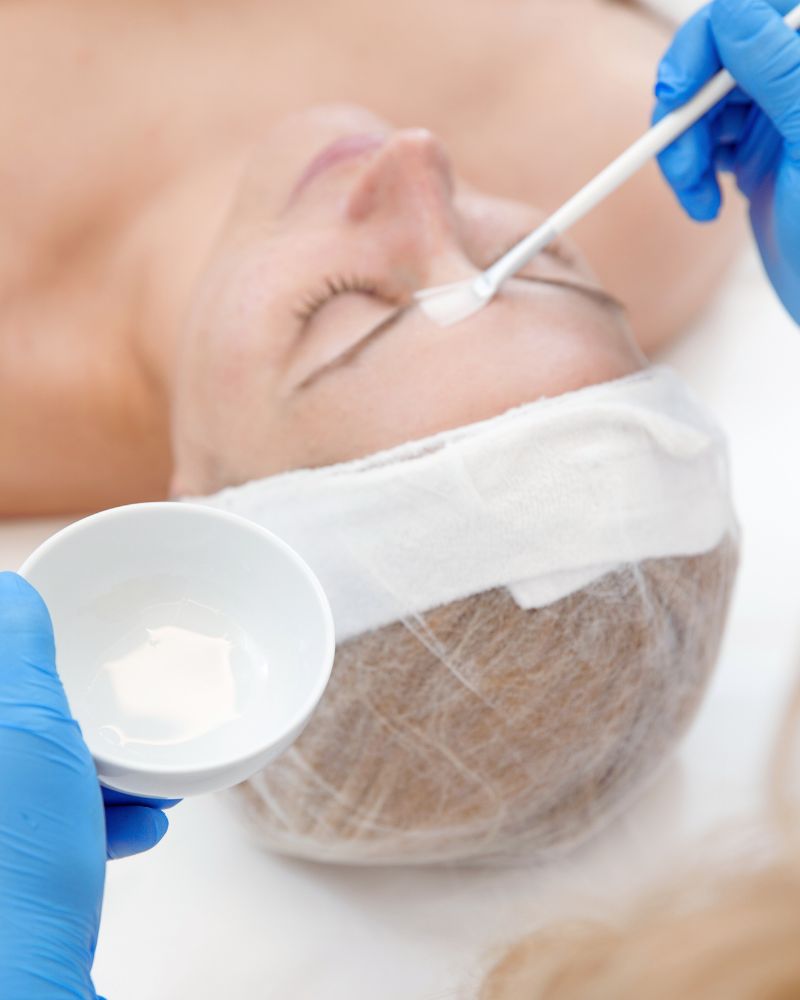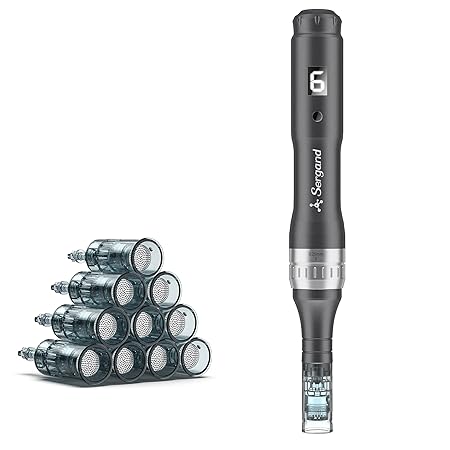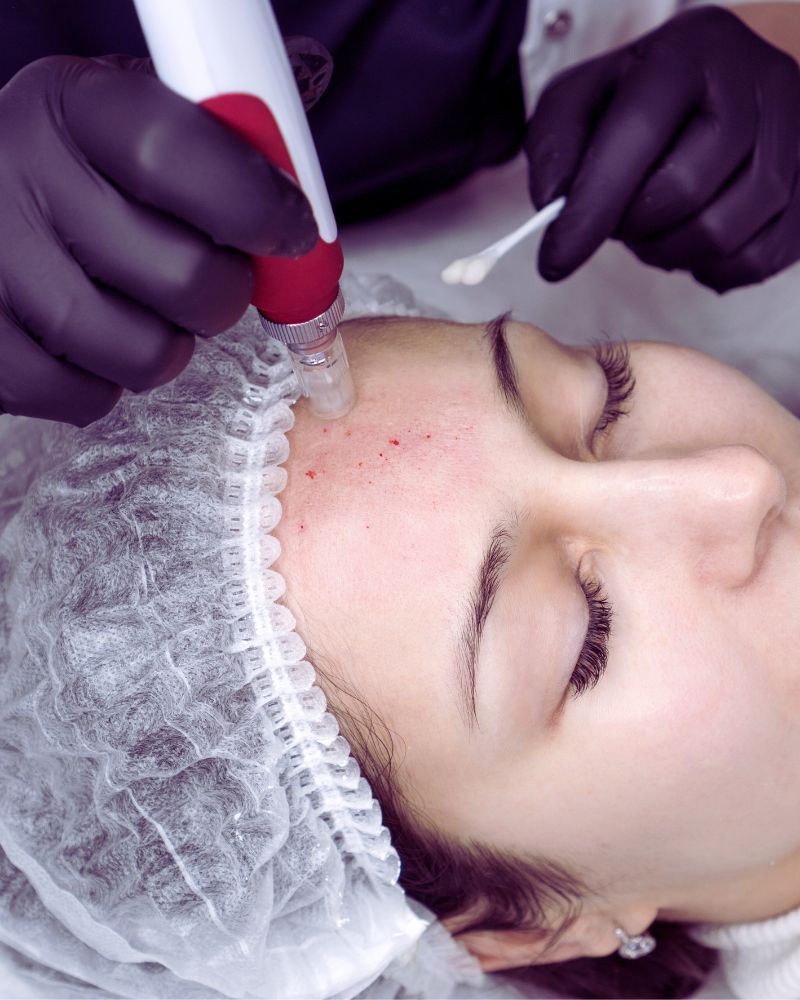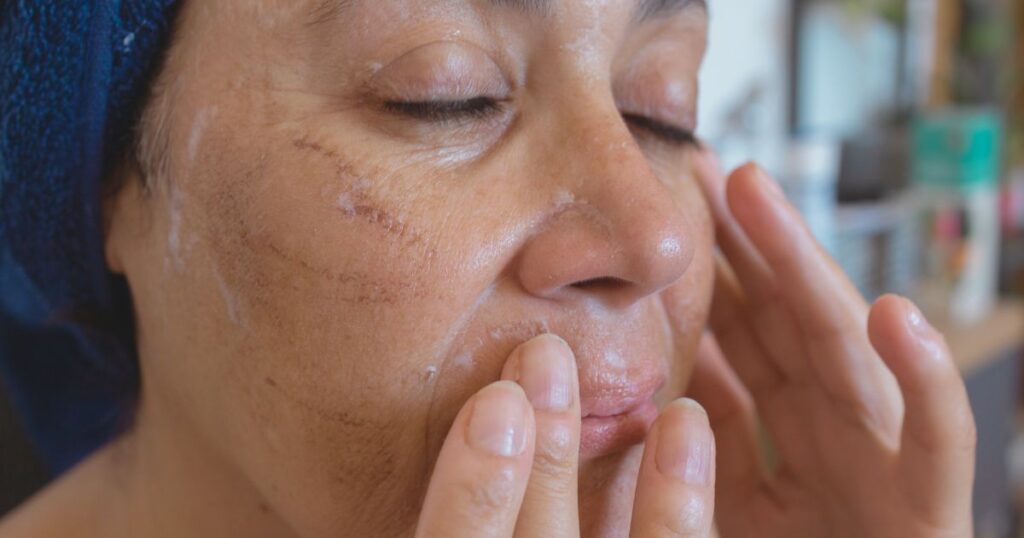As an Amazon affiliate, I may earn from qualifying purchases. Please read our Disclaimer and Privacy Policy.
I’ve been considering my options between microneedling vs a chemical peel. Frankly, they both sound painful. That’s what prompted me to do a little research to find out what each procedure involves. I wanted to know whether there’s any downtime, the cost, and the results I might expect.
Basically, I wanted to know if either option was worth it. Here’s what I found out!
My goal for this blog post is to help you decide on the treatment that’s right for you. This decision, of course, should include consultation with a professional who is experienced and licensed in both options.
Disclaimer: Microneedling vs a Chemical Peel
I am not a medical professional or a skin care expert. I’ve researched this topic so that you don’t have to. That said, please get the advice of a medical professional, dermatologist, plastic surgeon, liensed esthetician with advanced training, etc. Nothing in this blog post is designed as medical advice and shouldn’t be taken as such.
What is Microneedling?
Microneedling, also known as collagen induction therapy, is a cosmetic treatment that involves puncturing the skin with a microneedling device. It’s essentially a controlled injury to the skin that triggers the healing process.
The tiny punctures cause slight swelling, which signals the body to send healing cells and proteins. This wakes up skin-repairing cells that kickstart the healing process—this is where the real transformation begins!

Should You Buy a Drug Store Microneedling Device? What to Know.
If you’re curious about microneedling but not ready for a professional treatment, at-home microneedling devices (like derma rollers or stampers) might be a good option for you.
Keep in mind that they are much less powerful than medical-grade treatments. This is because the needles are shorter and don’t penetrate as deeply.
What to Shop For
If you want to try microneedling at home, look for the following in a product:
- Titanium of stainless stell needles
- Needle length under 0.5 mm. Anything longer should only be used by a professional.
- Look for a reputable brand and avoid cheap, low-quality rollers that could cause skin damage.
What to Expect With At-Home Microneedling
At-home microneedling can help with product absorption, skin texture, and mild fine lines, but won’t produce the dramatic results of professional treatments.
You might experience mild redness for a few hours, but there’s little to no downtime. Consistency is key, but over-use can actually harm your skin.
For more information on what to look for, what to expect, and safety considerations, please read:
Microneedling Devices: Getting to the Point on Benefits, Risks, and Safety (on the FDA website).
How At-Home Microneedling Can Reduce Scars, Spots, and Lines (Healthline)
Microneedle Derma Roller Pen

What is a Chemical Peel?
A chemical peel is basically a deep exfoliation for your skin.
It uses special acids to remove dead skin cells, revealing fresher, smoother skin underneath.
Depending on how strong the peel is, it can help with things like fine lines, acne scars, and dark spots. Some are super gentle, while others go deeper for more dramatic results.
What to Expect With At-Home Chemical Peels
If you’re trying an at-home chemical peel, expect a little tingling or warmth on your skin when you apply it.
Some peels might cause mild redness or flaking over the next few days, but don’t worry, that just means your skin is shedding the dull layers
Not all peels make your skin physically peel. Some work more gently to brighten your complexion over time. Just be sure to moisturize well and wear sunscreen afterward since your skin will be extra sensitive to the sun.
Watch this informative YouTube Video on Chemical Peeling
What to Shop For
Over-the-counter chemical peels offer a gentler alternative to professional treatments. They usually contain lower concentrations of glycolic acid, lactic acid, or salicylic acid.
When purchasing for at-home use, look for these qualities in the product:
- Low-concentration acids (5-10% for beginners, up to 20% for experienced users)
- Lactic acid for sensitive skin or salicyclic acid for acne-prone skin
- pH balanced formulas that won’t overly irritate the skin
Please Exercise Caution When Using Chemical Peels
There’s an article on the FDA website that warns consumers not to purchase or use certain chemical peels without appropriate professional supervision.
Why? Because in high concentrations of various acids, you can be seriously injured by chemical burns.
I highly suggest reading the article because it lists products you should avoid at all costs.
FDA Warns Against Purchasing or Using Chemical Peel Skin Products Without Professional Supervision
What a Deep Chemical Peel Really Means
A deep chemical peel is a cosmetic procedure that goes beyond the surface to treat serious skin concerns.
Unlike medium peels, which only reach the upper layers of skin, deep peels penetrate the lower dermis. These chemical peel treatments are often used to improve deep wrinkles, sun damage, and acne scarring.
Because they remove multiple layers of skin, they provide noticeable improvements, but the process is intense and requires a long recovery time.
During the procedure, a doctor applies trichloroacetic acid (TCA) or phenol to the skin. This application of a chemical solution causes the outer layers to peel away over time, revealing smoother, healthier skin underneath.
The procedure can take over an hour and may require sedation or general anesthesia due to the discomfort.
Afterward, the skin will be red, swollen, and very sensitive for several weeks. Healing can take up to three months, and strict aftercare is needed to prevent infections and protect the new skin. Deep peels offer long-lasting results, but they should only be done under medical supervision.

Get more tips on pre-treatment options for other cosmetic procedures
Best Body Wash Before a Spray Tan
Top Secrets on How to Conceal Under Eye Bags Over 50
5 Advanced Benefits of Aquagold vs Microneedling
Five Pros of Microneedling vs a Chemical Peel
The following list of pros and cons of microneedling vs a chemical peel refer to medical-grade services provided by a licensed practitioner in-office.
1. Works for All Skin Tones
Unlike some chemical peels that can cause hyperpigmentation, microneedling vs a chemical peel is safe for all skin types.
It doesn’t rely on acids that might lighten or darken the skin unevenly, making it a great option for everyone.
2. Stimulates Natural Collagen Production
Microneedling boosts collagen and elastin by creating tiny micro-injuries in the skin.
This triggers your body’s natural healing process. For this reason, microneedlingis considered one of the best treatments for fine lines, wrinkles, and scars.
3. Minimal Peeling or Shedding
While chemical peels work by exfoliating and causing skin to flake off, microneedling doesn’t typically result in visible peeling.
You might have some redness and mild swelling for a day or two, but you won’t have to deal with days of shedding skin.
4. Shorter Recovery Time
Most people can return to their routine within 24-48 hours after microneedling, whereas medium to deep chemical peels might take a week or more to heal.
If you want quicker downtime, microneedling is the better choice.
5. Helps Absorb Skincare Products Better
Microneedling creates tiny channels in the skin, making it easier for serums, hyaluronic acid, and other treatments to absorb deeply.
This means your skincare products work more effectively, giving you even better results over time.
Five Cons of Microneedling vs a Chemical Peel
The following cons of microneedling vs a chemical peel refers to the services provided by a medically licensed practitioner in-office.
1. Multiple Sessions Required for Optimal Results
Microneedling creates tiny micro-injuries in the skin to trigger your body’s natural healing process. That, however, takes time. For best results, it takes multiple sessions.
Most people need 3 – 6 treatments that are spaced 4 – 6 weeks apart to see major improvements in skin texture.
Chemical peels, however, remove skin layers instantly. In fact, medium to deep peels can provide dramatic improvements in just one session.
2. Mild Discomfort
The microneedling procedure can cause slight pain, though numbing creams help reduce discomfort. Some people describe it as a mild to moderate prickling or scratching sensation. For reference, shallow microneedling (0.25 mm – 0.5 mm) may feel like sandpaper gliding over your skin.
Deepr microneedling (1.0 mm – 2.5 mm) feels more like a quick, stinging sensation.
3. Possible Temporary Redness and Swelling
It’s completely normal to experience redness and mild swelling of microneedling. It may even look like a mild sunburn.
4. Not as Effective for Deep Wrinkles
While it improves skin texture, it may not be the best treatment for deeper wrinkles and significant sagging.
5. Risk of Infection if Not Done Properly
Microneedling (as well as chemical peels) should be performed by a trained medical professional to prevent complications.
Which Treatment is Best for You?
Choosing between microneedling versus a chemical peel depends on your desired results and skin type.
If you want to improve the appearance of your skin by boosting collagen, reducing scars, or smoothing fine lines, microneedling might be the best option. It works from the inside out, stimulating your skin to heal naturally. However, it takes multiple sessions to see full results.
If you’re looking for faster results, a chemical peel can be a great skin treatment to brighten your complexion and improve texture. The type of chemical peel you choose matters—light peels work on the surface, while deeper peels target wrinkles, scars, and sun damage.
Stronger peels require more recovery time, but they can provide dramatic improvements in just one session.
To make an informed decision, consider your skin’s needs, how much downtime you can handle, and your long-term goals. If you’re unsure, a skincare professional can help you choose the best option for your skin.
Is microneedling better for acne scars?
Microneedling is generally better for deep scars than a chemical peel.
Do microneedling and chemical peels work well together?
Both treatment options serve different functions and can work well together, as long as they’re not performed at the same time, or within a short time frame of each other.
Do chemical peels have a longer downtime than microneedling?
After microneedling, you can expect some redness and mild peeling for about 2 to 5 days—kind of like a light sunburn. Chemical peels, on the other hand, have a wider range when it comes to downtime. A mild peel, like glycolic acid, might only leave your skin slightly flaky for a couple of days, while deeper peels (think TCA or phenol) can cause more intense peeling and redness that lasts up to two weeks. It all depends on how deep the peel goes!
How many microneedling sessions do you need to see results?
Microneedling often requires 3–6 sessions, spaced about 4 weeks apart, for significant improvement.
How many chemical peels does it take to notice a big difference?
Chemical peels can show results after a single session for brightening, but deeper issues like scars or wrinkles may need 3–5 peels over several months. Your skincare professional can help customize a treatment plan based on your goals.


